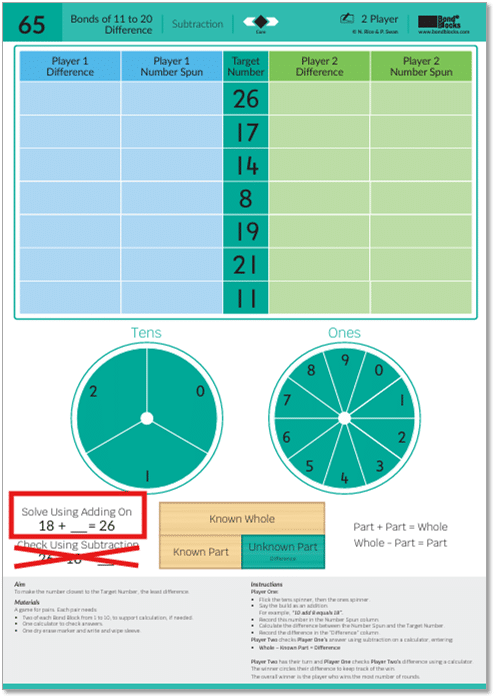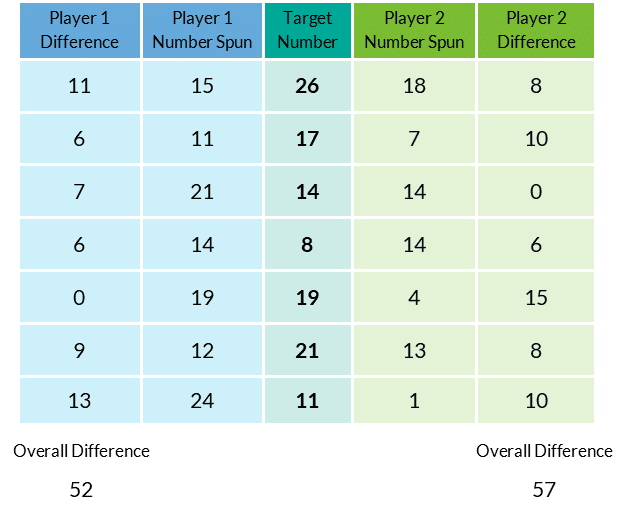65) Subtraction
Bonds of 11 to 20: Difference

Mathematics
Develop fluency calculating the difference between two, two-digit numbers less than 30.
Use part-part-whole to develop the concept of finding an unknown part in a subtraction equation by either:
- Adding on to the known part to equal the whole or
Known Part + Unknown Part = Whole
- Subtracting known part from the whole.
Whole – Known Part = Unknown Part

In this activity the:
- Whole could be either the Target Number or the Number Spun.
- Known part could be either the Target Number or the Number Spun.
- Difference between these two numbers is the unknown part.
The player who flicked the spinner calculates the unknown part using adding on.
The other player checks the calculation of the unknown part using subtraction on a calculator.
For example, Target Number of 14, spin 9

For example, Target Number of 14, spin 21

Please, click this link to read Teacher Notes for information about block placement when “Solving Subtraction Using Taking Away or Adding On”.
Prior knowledge of part-part-whole, ten plus bonds and bridging ten is required.
Language
- a number is made up of digits. For example, the number 23 is made up of two digits, 2 and 3.
- place value: The place of a digit in a number, in relation to the ones place, determines the digit’s value or worth. For example, In the number 23,
-
- the digit 2 is in the tens place, so is worth two tens, 20.
- the digit 3 is in the ones place so is worth three ones, 3.
-
- add, adding on
- subtraction
- equals
- difference: the amount by which two numbers differ.

Differentiation
A little easier
Sequence: step by step
Use Bond Blocks to represent the whole, as well as the parts.
- First, place a block/s to represent the largest number (either Number Spun or Target Number). Point to the block/s and say “This is the whole.”
- Second, a place block/s to represent the other number (either Number Spun or Target Number). Place these below the whole. Point to the block/s and say, “This is the part we know.”
- Third, point to the gap in the blocks, next to the known part. Say, “This is the difference. It is the part we don’t know yet.” The student then calculates the difference, says this number, then places a block to check (if needed).

Bond Blocks can be a helpful scaffold when bridging ten to calculate the unknown part. For example,

Skill Focus: addition
Complete the board using the “solving using adding on” instruction. Do not complete the “check using subtraction” instruction. Students with executive functioning difficulties find transisitoning between operations difficult.

A little harder
Calculate: overall difference
After the final round each player calculates their overall difference by adding all of their difference scores from each round, without using a calculator. The player with the overall lowest overall difference is the winner. Bond Blocks can be used to support calculations where needed. Each player checks the other player’s total difference using a calculator.

Here is an example of how Bond Blocks could be used to support adding Player One’s difference scores.

Here is an example of how Bond Blocks could be used to support adding Player Two’s difference scores.

Progression
In the next activity, students use addition and subtraction to find missing wholes and parts. Go to
Activity 66
Bonds of 11 to 20: Equation, Building
